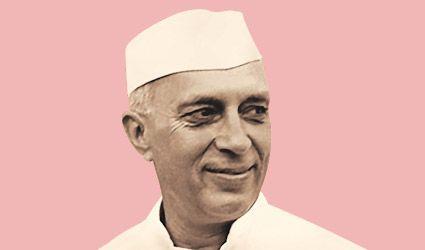భారతదేశ రాజకీయాల్లో బలమైన ముద్ర వేసిన ‘తొలి ప్రధాని’.. పండిట్.. చాచా నెహ్రూ!

భారతదేశ రాజకీయాల్లో కీలకమైన నిర్ణయాలు తీసుకొని, దేశ పురోగతిని సాధించడంలో ముఖ్యభూమిక పోషించారు. స్వాతంత్ర్యం వచ్చిన తర్వాత సుదీర్ఘకాలంపాటు ప్రధానిగా కొనసాగారు.. భారతదేశ తొలి ప్రధాని, మేధావి, ప్రపంచ రాజనీతిజ్ఞుడు, రచయిత, చరిత్రకారుడు, భారతీయ రాజకీయ దురంధరుడు.. అయిన నెహ్రూజీ.
రెండువందల సంవత్సరాలుగా దేశం పరాధీనంలో ఉండి, ఆర్ధికంగా అస్తవ్యస్తమైన రోజుల్లో.. ఈస్టిండియా కంపెనీ, తదుపరి పాలన చేసిన బ్రిటిషు ప్రభుత్వం కూడా దేశాన్ని దోచుకుపోవడం.. ఈ దుస్థితిలో దేశాన్ని ఆర్థికంగా సుస్థిరం చేయడం అవసరమని భావించాడాయన. అంతేకాకుండా దేశంలోని సంపద అంతా కొద్దిమంది చేతుల్లోకి చేరడం, ఎక్కువమంది నిరుపేదలుగా జీవించే పద్ధతిని మార్చి, సోషలిస్టు దృక్పథంతో దేశ ఆర్ధిక పరిస్థితిని పూర్తి స్థాయిలో చక్కదిద్దేందుకు ఆయన పూనుకున్నాడు. భారత్ లో భారీ పరిశ్రమల స్థాపన కోసం పంచవర్ష ప్రణాళికలను రూపొందించి, అమలుపరిచాడు. ప్రపంచ దేశాలన్నిటితో స్నేహసంబంధాలను పెంచి పోషించాడు. ఫలితంగా ప్రపంచ దేశాలకు రాజకీయ సలహాదారుగా భారత్ ను తీర్చిదిద్దిన ఖ్యాతి పొందాడు. అటువంటి జవహర్ లాల్ నెహ్రూ జీవిత, రాజకీయ విశేషాల గురుంచి మనం ఈరోజు ప్రత్యేకంగా తెలుసుకునే ప్రయత్నం చేద్దాం…
జీవిత నేపథ్యం:
1889 నవంబర్ 14న మోతీలాల్ నెహ్రూ, స్వరూపరాణి దంపతులకు జన్మించారు నెహ్రూ.. ఇద్దరు అక్కాచెల్లెళ్లు ఉన్నారు. వీరి పూర్వీకులు కాశ్మీరు పండిత బ్రాహ్మణ కుటుంబానికి చెందినవారు.. తండ్రి మోతీలాల్ అప్పట్లో ప్లీడరు. సొంతూరు కాశ్మీరు నుంచి అలహాబాద్ కు మకాం మార్చి, హైకోర్టులో న్యాయవాదిగా చేరారు. అక్కడే ఓ చక్కని ఇల్లుని కట్టుకున్నారు. పేరు
‘ఆనందభవన్’. భారత స్వాతంత్ర్యోద్యమంలో భాగంగా జాతీయ కాంగ్రెసు నాయకులు ఈ ఆనంద భవనాన్నే విడిదిగృహంగా, కార్యవేదికగానూ ఉపయోగించుకున్నారు. పేరు మోసిన లాయర్ గా, అప్పటి సంపన్నుల్లో ఒకరిగా నిలిచారూ మోతీలాల్ నెహ్రూ.. ఇకపోతే జవహర్ నెహ్రూ ప్రాథమిక విద్య అంతా తన ఇంటి దగ్గర ప్రైవేటు ఉపాధ్యాయుల వద్దే నడిచింది. పై చదువుల కోసం 15ఏళ్ల వయసులో లండన్ కు వెళ్లాడు. అప్పటి ఇంగ్లండ్ రాజకుటుంబీకుల కుమారులతో సమానంగా, జవహర్ లాల్ కాలేజీ విద్యను పూర్తి చేశారు. గుర్రపుస్వారీ, ఈత ఆయనకు ఇష్టమైన వ్యాపకాలు. జవహర్ అంటే, గులాబీ పుష్పం అని అర్ధం. తన పేరుకు తగినట్లుగానే జవహర్ ఎల్లప్పుడూ తన కోటుకు గులాబీ పుష్పాన్ని ధరిస్తూ ఉంటాడనీ ప్రతీతి.
కమలతో నెహ్రూ వివాహం అనంతరం లండన్ లో బారిస్టర్ పట్టాపొందారు. తిరిగి 1912లో తిరిగి స్వదేశానికి చేరుకున్నారు. అభ్యుదయ భావాలు కలిగిన వ్యక్తి కావటంతో.. పురాతన, సంప్రదాయాలు, ఆచార వ్యవహారాలపట్ల అంతగా ఆసక్తి కనబరిచేవారుకాదు. మూఢ నమ్మకాలు, ఆచారాలను పూర్తిగా వ్యతిరేకించేవారు. అయితేనేం దేశదేశాల చరిత్రను, సంస్కృతిని ఆకళింపు చేసుకున్నారు. ఈ కారణంగానే జాతీయ పోరాటంలో యువతకు ప్రాతినిధ్యం వహించేలా చేసింది.
రాజకీయాల్లో బలమైన ముద్ర…
*1929లో తండ్రి మోతిలాల్ నెహ్రూ అఖిల భారత కాంగ్రెస్ అధ్యక్షులుగా పనిచేసి, పదవి విరమణ చేశారు. కొన్నాళ్ళకు తండ్రి చేతుల మీదుగానే జవహర్ లాల్ అఖిల భారత కాంగ్రెస్ అధ్యక్ష పదవీని స్వీకరించారు. కాంగ్రెసు మహాసభల్లో భాగంగా హిందూస్తాన్ సేవాదళ్ ఆవిర్భవించింది. దీనికి ప్రథమ అధ్యక్షుడిగా జవహర్ లాల్ ఎన్నిక కావడంతో, రాజకీయాల్లో కీలక అంకం మొదలైందని చెప్పవచ్చు.
*ఇదే ఏడాది లాహోర్ లో జరిగిన కాంగ్రెసు సమావేశానికి నెహ్రూ అధ్యక్షత వహించారు. సంపూర్ణ స్వరాజ్యం తన అంతిమ ధ్యేయమని ఈ సమావేశంలో భాగంగా కాంగ్రెసు ప్రకటించింది. దీంతో జాతీయ పోరాటంలో నూతన ఘట్టం ప్రారంభమైంది.
*1931లో మహాత్మాగాంధీ అధ్యక్షతన హిందూస్తాన్ సేవాదళ్ మహాసభలు జరిగి, తరువాత కాంగ్రెసు పార్టీలో విలీనం చెందాయి. ఈ మహాసభలను హిందూస్థాన్ సేవాదళ్ వాలంటీర్లు కలిసి జాతీయ స్థాయిలో నిర్వహించడం విశేషం. అప్పటికీ స్వాతంత్రోద్యమం ఉదృతం కావడంతో సేవాదళ్ ఇతర కార్యక్రమాలను రద్దు చేసుకొని జాతీయ పోరాటంలో భాగస్వామి అయ్యింది.
*1936లో జవహర్ లాల్ అఖిల భారత కాంగ్రెసుకు రెండోసారి అధ్యక్షునిగా ఎన్నికయ్యారు.
*లక్నో సమావేశంలో కాంగ్రెసు విధానాలకు ఒక కొత్త రూపకల్పన చేశారు. భారతదేశ విదేశాంగ విధానం ఎలా ఉండాలో నిర్ణయించడంలో ప్రత్యేక పాత్ర పోషించారు.
*శాంతి, స్వాతంత్ర్యాల కోసం పోరాడడం, *ప్రపంచంలో ఎక్కడ స్వాతంత్ర్య పోరాటం జరుగుతున్నా దాన్ని బలపరచటం,
*వలస రాజ్యవిధానాన్ని పూర్తిగా వ్యతిరేకించడం..
వంటివి ప్రధాన అంశాలుగా ప్రతిపాదిస్తూ…కాంగ్రెసు పార్టీ అనుసరించవలసిన విదేశాంగ విధానాన్ని నెహ్రూ సూత్రీకరించి, ఆమోదింపచేశారు.
అప్పటి జాతీయోద్యమంలోనూ, స్వాతంత్ర్యం లభించిన తరువాత మన విదేశాంగ విధానానికి సైతం ఈ సూత్రాలే ప్రాతిపదికలయ్యాయి.
*1937లో జరిగిన ఫెయిజపూర్ కాంగ్రెసు సమావేశం కూడా నెహ్రూ అధ్యక్షతనే జరిగింది. వ్యవసాయరంగంపై వివిధ రాష్ట్రాల కాంగ్రెసు కమిటీలు సమర్పించిన అన్ని నివేదికలను ఈ సమావేశంలో చర్చించడం జరిగింది. దేశంలోని వ్యవసాయ సమస్యలకు సంబంధించి ఒక సమగ్రమైన తీర్మానాన్ని ఈ మహాసభలో ఆమోదించడం జరిగింది.
*1938లో జరిగిన హరిపురా కాంగ్రెసు మహాసభకు నేతాజీ సుభాష్ చంద్రబోస్ అధ్యక్షత వహించారు. ఈ సమావేశంలో అభివృద్ధి ప్రణాళికను రచించడానికి జవహర్ లాల్ నెహ్రూ అధ్యక్షతన జాతీయ సంఘం ఒక ప్రణాళిక సంఘాన్ని నెలకొల్పింది. స్వాతంత్ర్యం లభించిన తరువాత నెలకొల్పిన ‘జాతీయ ప్రణాళిక సంఘానికి’ ఇది మార్గదర్శిగా మారింది.
జాతీయ పోరాటంలో…
జాతీయపోరాటంలో గాంధీజీ తరువాత, రెండో స్థానంలో నెహ్రూ ఉంటారు. నిరంతరం స్వాతంత్య్ర పోరాట కార్యక్రమాల్లో తలామునకలై ఉండేవారు. 1946లో ఇంగ్లండ్ లో జరిగిన ఎన్నికల్లో లేబర్ పార్టీ విజయం సాధించి, అట్లీ ప్రధానమంత్రి అయ్యాడు. తదుపరి, భారతదేశానికి స్వాత్రంత్యం ఇచ్చేందుకు ఆయన నిర్ణయించుకున్నారు. అప్పట్లో ఇండియాకు గవర్నర్ జనరల్ గా లార్డ్ మౌంట్ బాటెన్ ఉన్నారు. వాస్తవానికి మౌంట్ బాటెన్ ఆధ్వర్యంలోనే భారత్ కు స్వాతంత్ర్యం వచ్చింది.
వీరిద్దరి మధ్యన మంచి సత్సంబంధాలు ఉండేవి. ఈ మైత్రి వల్లే స్వాతంత్య్రనంతరం కూడా ఇంగ్లండు-భారతదేశాల మైత్రి సాఫీగా సాగింది.
పీఎంగా.. ఎన్నో మార్పులు…
*1946లో భారతదేశంలో సాధారణ ఎన్నికలు జరిగాయి. చాలా రాష్ట్రాల్లో కాంగ్రెసు అఖండ విజయాన్ని సాధించింది. కొన్నిచోట్ల ముస్లింలు అధికంగా ఉన్న ప్రాంతాల్లో ముస్లింలీగ్ గెలిచింది. ఏదేమైనా జవహర్ లాల్ నెహ్రూ ప్రధానమంత్రిగా ఎన్నికయ్యారు. బాబూ రాజేంద్రప్రసాద్ రాజ్యాంగపరిషత్తు అధ్యక్షుడిగా ఎన్నికయ్యారు. నూతన రాజ్యాంగ రచనా సంఘం ఏర్పడి, భారతదేశానికి నూతన రాజ్యాంగాన్ని రచించాల్సిన అవశ్యకం ఏర్పడింది. కాంగ్రెసును అప్పటిదాకా వ్యతిరేకిస్తూ వచ్చిన డాక్టర్ బి.ఆర్. అంబేద్కర్ ను నెహ్రూ తన మంత్రివర్గంలోకి తీసుకొని, ఆయనకు న్యాయశాఖమంత్రి పదవిని అప్పగించడం విశేషం.
న్యాయశాస్త్ర కోవిదుడు, అభ్యుదయ భావాలు కలిగిన అంబేద్కర్ ను భారత రచనా సంఘానికి అధ్యక్షుడ్ని చేయడం వెనుక నెహ్రూ దూరదృష్టి లేకపోలేదు. పార్లమెంటులో హిందూకోడ్ బిల్లును అంబేద్కర్ ప్రవేశపెట్టినప్పుడు దాదాపు పార్లమెంట్ లోని సభ్యులంతా ఈ బిల్లును వ్యతిరేకించారు. ఆ సందర్భంలో నెహ్రూ ఒక్కరే అంబేద్కర్ ను సమర్ధించారు. హిందూ కోడ్ బిల్లు దేశానికి అవసరమని ప్రధాని నెహ్రూ వాదించాడు. అయితే బిల్లు పాస్ అవ్వడానికి తగినంత మెజారిటీ లేక వీగిపోయినప్పుడు, ఎంతగానో విచారించారు.
*అప్పట్లో పార్లమెంటులో సభ్యులుగా డాక్టర్ శ్యామ్ ప్రసాద్ ముఖర్జీ, భూపేశ్ గుప్తా, సుందరయ్య, తరిమెల నాగిరెడ్డి వంటి హేమాహేమీలు ఉన్నారు. అయినప్పటికీ పార్లమెంటు వ్యవహారాలను సజావుగా నిర్వహించడంలో నెహ్రూ నూటికి నూరుపాళ్లు న్యాయం చేశారనడంలో అతిశయోక్తి లేదు.
పంచవర్ష ప్రణాళికలు.. అభివృద్ధికి ప్రామాణికాలు..
1947 ఆగస్టు 15న దేశానికి స్వాతంత్ర్యం లభించిన నాటి నుంచి సుదీర్ఘకాలం ప్రధానిగా ఉన్న నెహ్రూ దేశాన్ని అభ్యుదయ దిశలో పయనించేలా చేసేందుకు ఎంతగానో కృషి చేశారు.
రష్యాలో జరిగిన అక్టోబర్ విప్లవం ఆయన్ను ఎంతగానో ప్రభావితం చేసిందనే చెప్పాలి.
*1955లో ఆవడిలో జరిగిన కాంగ్రెసు సమావేశంలో దేశ ఆర్థిక పరిస్థితిని చక్కదిద్దేందుకు అవసరమైన కార్యాచరణ రూపుదిద్దుకుంది. ఆవడి తీర్మానం ప్రాతిపదికగా నెహ్రూ ప్రణాళికా సంఘాలను అమలుపరిచారు.
*పంచవర్ష ప్రణాళికలు పేరుతో నిర్దేశించిన విధంగానే ప్రభుత్వం విధానాలను అమలు చేసేలా రూపకల్పన చేశారు.
*వ్యాపార సరళిలో వ్యవహారించే పాశ్చాత్య దేశాల నుంచి ఆర్థిక సహాయాన్ని ఆశించకుండా నెహ్రూ రష్యాతో స్నేహ సంబంధాలను పెంచుకుని, ఆర్థిక సహకార ఒప్పందంతో దేశంలో భారీ పరిశ్రమలను నెలకొల్పారు.
ఉదా: భిలాయ్ ఉక్కు కర్మాగారం.
జవహర్ లాల్ భారత్ లోకి భారీపరిశ్రమలను తీసుకొచ్చారు. తద్వారా నిరుద్యోగ సమస్యకు పరిష్కారం లభించగలదని ఆయన విశ్వసించారు. భిలాయ్, దుర్గాపూర్ లలో ఉక్కు, ఇనుప కర్మాగారాలు, చిత్తరంజనలో రైలు ఇంజిన్ ల తయారీ, పెరంబూరు రైలు పెట్టెల కర్మాగారం వంటి భారీపరిశ్రమల స్థాపన వెనుక నెహ్రూ కార్యాచరణ ఉందని చెప్పుకోవాలి.
ఆంధ్రరాష్ట్ర నిర్మాణంలో కూడా జస్టిస్ వాంఛూ నివేదిక ప్రకారం ఆంధ్రుల కోరికను మన్నించి, రాష్ట్ర నిర్మాణాన్ని తన చేతుల మీదుగా ప్రారంభోత్సవం జరిపాడు. ఆంధ్రప్రదేశ్ పట్ల నెహ్రూ చూపిన ప్రేమాభిమానాలకు చిహ్నం నాగార్జున సాగర్ ప్రాజెక్టు నిర్మాణమే.
ప్రపంచ రాజకీయాల్లో శాంతి నెలకొల్పారు..
*విదేశాంగ విధానాన్ని కూడా ఇదేవిధంగా నెలకొల్పాడు. రష్యాతో ఆర్థిక ఒప్పందంతోపాటు, చైనాతో పంచశీల ఒప్పందం సాధించడంలో కిలకమయ్యారు. దీంతో వర్ధమాన దేశాల కూటమికి రూపకల్పన కూడా జరిగింది. ఇదే తృతీయ కూటమిగా కూడా చెలామణి అయింది. ఇటు పాశ్చాత్య దేశాల కూటమి, అటు కమ్యూనిస్టు దేశాల కూటమిలతో ప్రపంచ రాజకీయాల్లో పోటీ నెలకొంది. ఈ తరుణంలో చిన్నచిన్న దేశాలు ఏదో కూటమిలో చేరక తప్పలేదు. ఆర్థిక సహాయం పేరిటనో, ఆయుధ సహాయం పేరిటనో ఆశలు చూపి, తమపై ఆధారపడిన బడుగు దేశాలను లాక్కునే మృత్యున్యాయాన్ని ఎదిరించి జవహర్ లాల్ నెహ్రూ ఈజిప్టు, ఇండోనేషియా, శ్రీలంక వంటి దేశాల సహకారంతో వర్ధమాన దేశాల కూటమిని ఏర్పరచి, తృతీయ రాజకీయ శక్తిగా మారారు. దీంతో ప్రపంచ రాజకీయ మేధావిల జాబితాలో నెహ్రూ గొప్పగా కీర్తి గడించారు. ఈ విజయం నెహ్రూ రాజనీతికి కలికితురాయిగా చెప్పవచ్చు.
*రష్యా-అమెరికాల మధ్య యుద్ధ వాతావరణం, సూయజ్ కెనాల్ జాతీయం చేసినప్పుడు ఈజిప్టుతో పశ్చిమ రాజ్యాలకున్న వైరం, శ్రీలంక వద్ద హిందూ మహాసముద్రంలో అమెరికా యుద్ధస్థావరాల ఏర్పాటు, క్యూబాలో ఫైడల్ కాస్ట్రో ఎర్రజెండా ఎగర వేసినందుకు అమెరికా కన్నెర్ర చేయడం, దక్షిణఫ్రికాలో జాతివిచక్షణ.. ఇవేకాక ఇతర సమస్యలలో ప్రపంచం ప్రతిక్షణం యుద్ధం అంచుకు చేరుతూ, దేశదేశాల్లోని ప్రజలు భీతిల్లుతున్న తరుణంలో, మూడవ ప్రపంచ యుద్ధం అనివార్యమేమోననే భయం ఆవరించిన సమయంలో నెహ్రూజీ శాంతి పావురాన్ని భూమండలం మీద ఎగరవేసి, శాంతి వాతావరణాన్ని ఏర్పరిచారు.
ఇతరాంశాలు…
*జవహర్ లాల్ మంచి రచయిత కూడా. దేశదేశాల సంస్కృతులను భౌగోళిక, రాజకీయ స్థితిగతులను వివరిస్తూ భారతదేశ చరిత్రపై ఓ గ్రంథాన్ని రచించారు. ‘డిస్కవరీ ఆఫ్ ఇండియా’ పేరుతో రచించిన ఈ గ్రంథం ఎన్నోసార్లు ప్రింట్ అయ్యింది. *1933-34లో ‘భారతదేశ గమ్యం ఎటు?’ అనే గ్రంథాన్ని నెహ్రూ ప్రచురించారు. సామ్యవాదం గురించి ప్రజల్లో అవగాహన పెంచేందుకు ఉద్దేశించి రాసినది.
*నెహ్రూజీకి బాలలంటే ఎంతో ఇష్టం. అందుకే నెహ్రూ జన్మదినం బాలల దినోత్సవంగా నేటికీ జరుపుకోవడం విశేషం. ‘నేటి బాలలే రేపటి పౌరులం’టూ నెహ్రూజీ బాలల మీద ప్రేమానురాగాలను చూపేవాడు. చాచానెహ్రూ అంటూ పిల్లల దృష్టిలో నెహ్రూ స్థిరపడిపోయారు.
*విశాల దృక్పథం, అభ్యుదయ భావాలు, ప్రపంచ రాజకీయాల్లో అత్యంత కీలక పాత్ర వహించిన నెహ్రూకి అనుకోకుండా చైనా భారత్ పై దాడి చేయడంతో నిర్వీణులయ్యారు. ఎందుకంటే తాను పెంచి పోషించిన పంచశీల వ్యర్థమైందని ఆవేదన చెందారు. కారణం.. టిబెట్టు బౌద్ధాచార్యుడు దలైలామా శరణార్థిగా భారతదేశం వచ్చినప్పుడు ఆయనకు ఆశ్రయమిచ్చి హిమాచల్ ప్రదేశ్ లో వసతి ఏర్పాటు చేసినందుకు కోపగించిన చైనా భారతదేశంపై కక్షగట్టి, దాడి చేసింది.
ఈ సంఘటన నెహ్రూజీని బాగా క్షోభ పెట్టింది.
*అప్పటికే కూతురు, శ్రీమతి ఇందిరాగాంధీని కాంగ్రెస్ అధ్యక్షురాలిగా నియమించి, దేశ రాజకీయరంగంలోకి ప్రవేశించేలా చేసి, భవిష్యత్ దేశ రాజకీయసారథిగా ఆమెను తీర్చిదిద్దారు.
*1964 మే 27న, నెహ్రూ తన (75) వయసులో అనారోగ్యం కారణంగా కన్నుమూశారు.
నెహ్రూజీ ఆశయం మేరకు అలహాబాద్ లోని ఆనంద్ భవన్ మ్యూజియం, దిల్లీలో త్రిమూర్తి భవనంలో నెహ్రూజీ స్మృతి చిహ్నంగా నేటికీ అమరజ్యోతి వెలుగుతూనే ఉండటం విశేషం.











